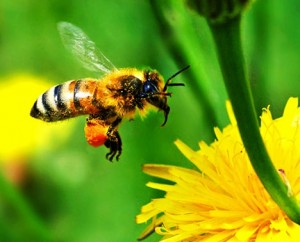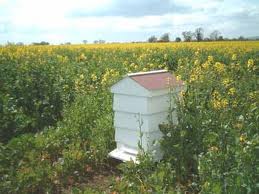 The main piece of equipment that you will need to keep bees is a hive. Over the years a wide variety of hives have been developed but basically modern hives fall into two basic types those based on the original
Langstroth hive
(including all the size variants) which has enclosed frames to hold the comb and the
top-bar hive
, as the name implies which has only a top-bar to support the comb.
The main piece of equipment that you will need to keep bees is a hive. Over the years a wide variety of hives have been developed but basically modern hives fall into two basic types those based on the original
Langstroth hive
(including all the size variants) which has enclosed frames to hold the comb and the
top-bar hive
, as the name implies which has only a top-bar to support the comb.
There are various sizes of Langstroth based hives used around the world, for example the Smith, Segeberger Beute (German), Frankenbeute (German), Normalmass (German), Langstroth hive, Commercial Hive, Dadant Hive, National Hive (most popular in the UK ) and the WBC picture book classic shaped hive (see above) which is still popular in the UK amongst hobbyists.
This all might seem confusing but all modern hives are basically made up of the same basic components and the difference between the types of hives, relates to the sizes of the boxes and or the number of frames they hold.
The following articles will provide you with everything you need to know about bee hives, starting with articles on the basic components of the hive ..
Parts of the Bee Hive in Detail
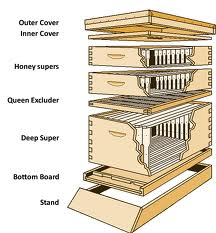
![]() Hive Stand
The hive stand, is actually an optional piece of equipment and elevates the bottom board (floor) of the hive off the ground.
Hive Stand
The hive stand, is actually an optional piece of equipment and elevates the bottom board (floor) of the hive off the ground.
 Floor or Bottom Board
There used to be only one kind of floor, a standard solid bottom board. However open mesh or screen floors have become increasingly popular in the last few years.
Floor or Bottom Board
There used to be only one kind of floor, a standard solid bottom board. However open mesh or screen floors have become increasingly popular in the last few years.
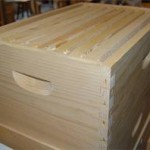 A hive is essentially composed of boxes, built on top of one another, of similar dimensions, but various heights depending upon their primary use or the beekeeper’s preference.
A hive is essentially composed of boxes, built on top of one another, of similar dimensions, but various heights depending upon their primary use or the beekeeper’s preference.
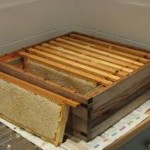 Supers are the boxes beekeepers place on the hives with the intention of harvesting whatever honey the bees store in them.
Supers are the boxes beekeepers place on the hives with the intention of harvesting whatever honey the bees store in them.
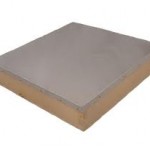 It might seem unusual to have two covers on a hive, the inner cover and the top cover.
It might seem unusual to have two covers on a hive, the inner cover and the top cover.
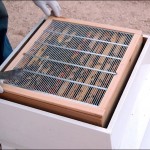 The primary functions of the queen excluder is to confine the queen and her brood to certain areas of the hive.
The primary functions of the queen excluder is to confine the queen and her brood to certain areas of the hive.
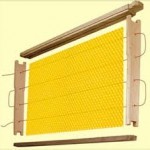 Frames
The suspended beeswax comb held within a frame is the basic structural component inside the hive.
Frames
The suspended beeswax comb held within a frame is the basic structural component inside the hive.
Types of Bee Hives
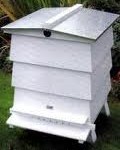 WBC Hive
What picture of an English country garden is complete without a white-painted WBC Hive.
WBC Hive
What picture of an English country garden is complete without a white-painted WBC Hive.
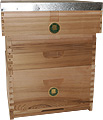 Smith Hive
The Smith Hive was designed by Scotsman Willie Smith last Century.
Smith Hive
The Smith Hive was designed by Scotsman Willie Smith last Century.
Other Bee Hive Information
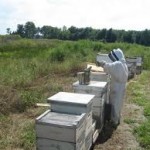 Locating your Bee Hives
Once you have decided beekeeping is for you some consideration should be given to where your hives should be situated.
Locating your Bee Hives
Once you have decided beekeeping is for you some consideration should be given to where your hives should be situated.
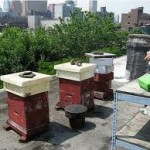 Urban Beekeeping Considerations
It is possible to keep bees almost anywhere including cities and towns and in fact beekeepers often find that honey production is better in an urban setting.
Urban Beekeeping Considerations
It is possible to keep bees almost anywhere including cities and towns and in fact beekeepers often find that honey production is better in an urban setting.
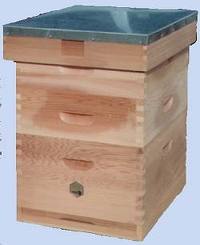 Where to get your Bee Hives
The actual bee hive is the most expensive piece of equipment for a beekeeper and it is this cost that can often put off many from starting beekeeping.
Where to get your Bee Hives
The actual bee hive is the most expensive piece of equipment for a beekeeper and it is this cost that can often put off many from starting beekeeping.
 Painting and Maintaining the Hive
The basic parts of the hive traditionally have been made out of pine, cypress or redwood.
Painting and Maintaining the Hive
The basic parts of the hive traditionally have been made out of pine, cypress or redwood.
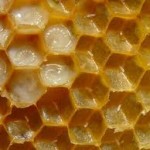 A Closer Look at Honeycomb
Honey bee nests are made from honeycomb, which is made up of a mass of hexagonal wax cells built by the bees from wax..
A Closer Look at Honeycomb
Honey bee nests are made from honeycomb, which is made up of a mass of hexagonal wax cells built by the bees from wax..
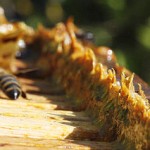 Propolis in Bee Hives
Propolis is the sticky resinous substance that bees collect from plants and trees and which gets all over your hands and clothes when inspecting a bee hive.
Propolis in Bee Hives
Propolis is the sticky resinous substance that bees collect from plants and trees and which gets all over your hands and clothes when inspecting a bee hive.
